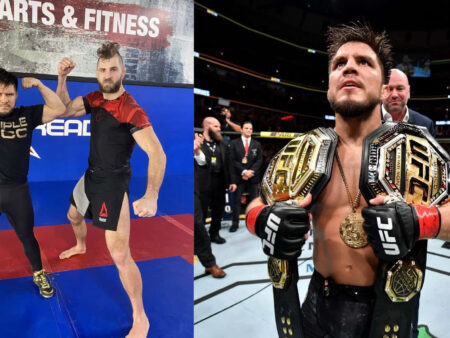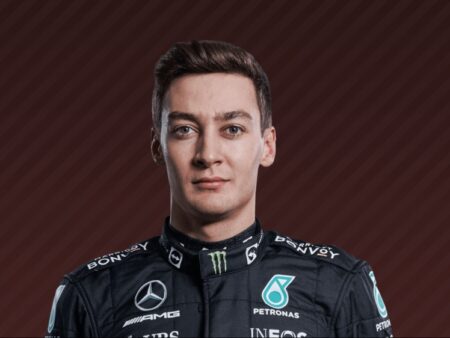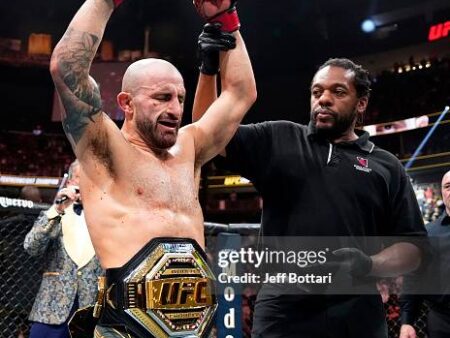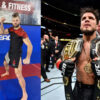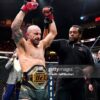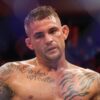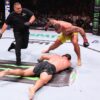This week marks the start of the NCAA tournament, an annual frenzy where top-seeded Duke, spearheaded by freshman sensation and projected No. 1 pick in the 2025 draft, Cooper Flagg, aims to triumph in San Antonio.
In the NBA, the upcoming month will spotlight several rebuilding teams, including the San Antonio Spurs. The Spurs are strategically positioning themselves to secure favorable odds in May`s draft lottery, hoping for a chance to draft Flagg and accelerate their journey to contention.
However, rebuild progress varies across teams. The Spurs are rapidly advancing towards Western Conference contention after acquiring Victor Wembanyama in the 2023 draft and trading for De`Aaron Fox in February. In contrast, the Detroit Pistons, who were last in the league with just 14 wins the previous season, have become a playoff contender in the less competitive Eastern Conference. Teams like the Brooklyn Nets, Charlotte Hornets, and Utah Jazz are still accumulating assets, focusing on draft prospects or awaiting the next available disgruntled star player.
We will examine the strategies of 11 franchises at different stages of rebuilding, evaluating their effectiveness and timelines for becoming contenders. Additionally, we will analyze three preseason contenders whose seasons have faltered due to injuries, roster issues, or trading away a key point guard, considering if they should also contemplate a rebuild.
Note: These rebuild rankings are not based on current roster strength but on each team`s rebuilding strategy and path to contention. For example, while Detroit is having its best season in years, led by All-Star Cade Cunningham, their long-term contention prospects might not be as strong as teams like the Jazz or Wizards, who are currently struggling but have better avenues for future improvement.
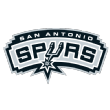
1. San Antonio Spurs
Players under 25: 8
Offseason cap space: None
Tradeable first-round picks: 5
Players on rookie-scale contracts: 5 (Victor Wembanyama, Stephon Castle, Jeremy Sochan, Malaki Branham, Blake Wesley)
The strategy: The Spurs exemplify how a single draft pick can transform a franchise. Landing Victor Wembanyama in 2023 redefined San Antonio`s direction. Paired with Stephon Castle, Devin Vassell, and De`Aaron Fox, the Spurs aim for a swift return to the NBA`s elite. Their draft prospects are further boosted by potentially acquiring another lottery pick from the Atlanta Hawks, as San Antonio controls Atlanta`s next three drafts.
Is it working? Assuming Wembanyama fully recovers from his shoulder injury, the Spurs` rebuild is successful primarily due to Wembanyama himself. He has exceeded expectations in his first two seasons and is the player any team would choose to build around.
Estimated return to relevance: With Wembanyama`s health intact, the Spurs are expected to contend for playoffs next season and be a formidable force in the West for years.
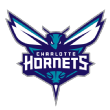
2. Charlotte Hornets
Players under 25: 8
Offseason cap space: None
Tradeable first-round picks: 8
Players on rookie-scale contracts: 5 (Brandon Miller, Tidjane Salaun, Mark Williams, Tre Mann, Nick Smith Jr.)
The strategy: This is the first full season under Charlotte`s new leadership, with Jeff Peterson and coach Charles Lee brought in to modernize the franchise. Charlotte has been praised for strategic trades to build assets and add young talent. Drafting Brandon Miller in 2023 seems like a success, and their 2025 first-rounder, Tidjane Salaun, is a developing 19-year-old forward. Charlotte currently has strong lottery odds (14%) for the top pick.
Is it working? The Hornets have a strong young core with LaMelo Ball, Miller, and Mark Williams. They`ve made sound foundational moves, but the upcoming lottery will be crucial. A decision on Ball`s long-term role, given his large contract, is also pending.
Estimated return to relevance: If Charlotte drafts Cooper Flagg, playoff contention next season is possible. However, poor lottery luck could delay their timeline, potentially aiming for top prospects like A.J. Dybantsa in the 2026 draft.
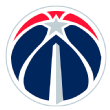
3. Washington Wizards
Players under 25: 7
Offseason cap space: None
Tradeable first-round picks: 6
Players on rookie-scale contracts: 6 (Alex Sarr, Bilal Coulibaly, Bub Carrington, Corey Kispert, AJ Johnson, Kyshawn George)
The strategy: Under Michael Winger and Will Dawkins, the Wizards are committed to a full rebuild through the draft, mirroring the Thunder`s model. They`ve acquired future draft capital and roster five first-round picks from 2023 and 2024, with two more expected in the upcoming draft, including a potentially high lottery pick.
Is it working? Success hinges on lottery luck and securing a top pick. Washington has taken chances on high-potential prospects like Bilal Coulibaly and Alex Sarr, but their development will determine the rebuild`s effectiveness.
Estimated return to relevance: Even with Cooper Flagg, Washington is likely a couple of years away from contention. Without top lottery luck, the timeline could extend further.
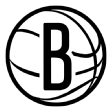
4. Brooklyn Nets
Players under 25: 9
Offseason cap space: $45 million
Tradeable first-round picks: 13
Players on rookie-scale contracts: 5 (Ziaire Williams, Noah Clowney, Dariq Whitehead, Cam Thomas, Day`Ron Sharpe)
The strategy: Trading Mikal Bridges for draft picks and regaining previously traded picks signaled a clear plan: bottom out for two seasons, capitalize on deep drafts, and then rebound. However, Jordi Fernandez`s coaching has kept Brooklyn mid-lottery, slightly off-plan.
Is it working? Hiring Fernandez is a success, but coaching alone isn`t enough. The Nets lack top talent by design. With draft picks and cap space, they have options, but lottery luck is crucial for a franchise without a lottery pick since 2012.
Estimated return to relevance: Likely a couple of years, unless the Nets aggressively pursue star acquisitions this summer. In that case, a quick playoff return in the East is possible.

5. Utah Jazz
Players under 25: 10
Offseason cap space: None
Tradeable first-round picks: 7
Players on rookie-scale contracts: 7 (Taylor Hendricks, Cody Williams, Keyonte George, Walker Kessler, Isaiah Collier, Brice Sensabaugh, Kyle Filipowski)
The strategy: The Jazz have intentionally shifted to a losing strategy in the latter part of the last two seasons to improve draft positioning. This season, they aimed for a top draft pick from the start and are vying for the league`s worst record. Aside from Walker Kessler, the upside of their other young first-round picks remains questionable. Taylor Hendricks, a promising prospect, suffered a season-ending injury.
Is it working? Will Hardy is an elite coach, a definite positive. Like other teams, their future heavily depends on whether they land Cooper Flagg or a lower pick in this deep draft.
Estimated return to relevance: Regardless of draft position, the Jazz are expected to be in the lottery again next season. Climbing the Western Conference standings will be challenging.

6. Toronto Raptors
Players under 25: 6
Offseason cap space: None
Tradeable first-round picks: 5
Players on rookie-scale contracts: 4 (Scottie Barnes, Gradey Dick, Ochai Agbaji, Ja`Kobe Walter)
The strategy: Trading Pascal Siakam and OG Anunoby suggested a brief lottery stint for Toronto. Acquiring Immanuel Quickley and Brandon Ingram with extensions indicated a quick return to competitiveness. Despite a challenging season, their remaining schedule may improve their draft position to eighth overall.
Is it working? The Raptors should return to playoff contention soon, which aligns with the plan. However, the goal is East home-court advantage, not just playoffs.
Estimated return to relevance: Playoffs should be achievable next season. But East contention is likely a couple of seasons away, dependent on Scottie Barnes`s continued development.

7. New Orleans Pelicans
Players under 25: 8
Offseason cap space: None
Tradeable first-round picks: 6
Players on rookie-scale contracts: 3 (Jordan Hawkins, Yves Missi, Trey Murphy III)
The strategy: The Pelicans` season has deviated from expectations. Trading for Dejounte Murray to advance after previous first-round exits backfired. Injuries to key players like Murray and Ingram, who was later traded, disrupted their plans. New Orleans might now be positioned for another high draft pick, potentially adding another franchise talent like Chris Paul, Anthony Davis, or Zion Williamson before him. Could Cooper Flagg or Dylan Harper be next?
Is it working? New Orleans appears caught between eras. Murray`s injury and Williamson`s inconsistency raise concerns. Trey Murphy`s injury further complicates matters. Yves Missi is a promising young center, but a significant leap up the standings is uncertain without another high draft pick.
Estimated return to relevance: A top draft pick could lead to play-in contention next season. However, with Murray injured, Ingram gone, and uncertainty around Williamson, another lottery season in 2025-26 seems likely. Williamson`s long-term future is also a major question.
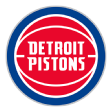
8. Detroit Pistons
Players under 25: 8
Offseason cap space: $20 million
Tradeable first-round picks: 4
Players on rookie-scale contracts: 6 (Cade Cunningham, Ron Holland II, Ausar Thompson, Jaden Ivey, Jalen Duren, Marcus Sasser)
The strategy: After struggles, the Pistons hired Trajan Langdon and coach J.B. Bickerstaff, surrounding Cade Cunningham with veteran shooters. This has positioned Detroit for a top-six East spot and potentially home-court advantage in the playoffs for the first time since 2008. They also have promising young talent beyond Cunningham.
Is it working? Despite playoff contention, the Pistons are ranked lower because their success cost them a first-round pick in a deep draft. While they have a young All-Star in Cunningham, acquiring another star remains challenging.
Estimated return to relevance: Detroit has arguably returned to relevance this season after years of mediocrity. However, true conference finals contention still seems distant.
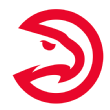
9. Atlanta Hawks
Players under 25: 8
Offseason cap space: None
Tradeable first-round picks: 5
Players on rookie-scale contracts: 4 (Zaccharie Risacher, Dyson Daniels, Kobe Bufkin, Jalen Johnson)
The strategy: Trading for Dejounte Murray in 2022 limited Atlanta`s draft flexibility until 2027. Now, they aim to refresh the roster with young talent while staying competitive. Trading Murray back to New Orleans brought in Dyson Daniels and future picks, building a young core with Daniels, Jalen Johnson, and Zaccharie Risacher.
Is it working? The Hawks have accumulated young talent and future draft assets, but progress will take time. Trae Young`s future is also uncertain as he approaches free agency in 2026.
Estimated return to relevance: Atlanta should remain in the playoff hunt for the next few seasons. However, contending for home-court advantage in the East requires another star player acquisition.

10. Portland Trail Blazers
Players under 25: 8
Offseason cap space: None
Tradeable first-round picks: 4
Players on rookie-scale contracts: 5 (Scoot Henderson, Donovan Clingan, Shaedon Sharpe, Kris Murray, Jabari Walker)
The strategy: Portland`s strategy post-Damian Lillard is unclear after a poor season. While they gained draft assets in trades, acquiring Deni Avdija seemed like a win-now move, conflicting with a rebuild. Having veterans like Ayton and Grant also doesn`t align with a clear rebuilding path, and cap flexibility is limited.
Is it working? Recent wins might suggest progress, but they`ve dropped out of top lottery positions, potentially missing a high draft pick. Henderson and Clingan are improving, but it`s questionable if their next foundational player is currently on the roster.
Estimated return to relevance: Portland has improved defensively, but a significant talent boost is needed to climb the Western Conference. The path to acquiring this talent is uncertain.
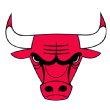
11. Chicago Bulls
Players under 25: 6
Offseason cap space: None
Tradeable first-round picks: 6
Players on rookie-scale contracts: 3 (Josh Giddey, Matas Buzelis, Dalen Terry)
The strategy: Unclear. Bulls executive Arturas Karnisovas suggested building with `nine, 10 very good players` instead of relying on top stars. Cap flexibility is coming in 2026 but not this summer. Rookie Matas Buzelis is a long-term project. Recent trades yielded minimal return, indicating a potential shift towards rebuild.
Is it working? The Bulls seem finally committed to a rebuild after years of limited playoff success. As a current 9-seed, lottery improvement is unlikely this season, making next season the theoretical start of a true rebuild.
Estimated return to relevance: It`s been a decade since the Bulls won a playoff series, and ending that streak this decade seems challenging without significant lottery luck.
Will they or won`t they?

Philadelphia 76ers
Players under 25: 7
Offseason cap space: None
Tradeable first-round picks: 5
Players on rookie-scale contracts: 2 (Jared McCain, Quentin Grimes)
Should they rebuild? A complex question. If Philadelphia keeps its pick and adds a top talent like Cooper Flagg, and if Embiid and George regain form, they could be East contenders next season. But if veterans decline and they lose their pick, 2025-26 could be tough. Some suggest trading Embiid and George now to rebuild around Maxey and young talent. However, their large contracts and recent performance make trades difficult.

Phoenix Suns
Players under 25: 2
Offseason cap space: None
Tradeable first-round picks: 2
Players on rookie-scale contracts: 1 (Ryan Dunn)
Should they rebuild? Owner Mat Ishbia dismisses rebuilding. However, escaping their current situation is challenging. Durant is expected to leave, but his trade value at 36 is limited. Beal has a no-trade clause, hindering his value. Booker is staying, leaving few paths to improve a roster that missed the playoffs.
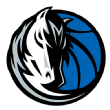
Dallas Mavericks
Players under 25: 4
Offseason cap space: None
Tradeable first-round picks: 3
Players on rookie-scale contracts: 3 (Dereck Lively II, Olivier-Maxence Prosper, Jaden Hardy)
Should they rebuild? Surprisingly, yes. Despite reaching the Finals last June, trading Doncic and Irving`s injury impact their future. Their `three- to four-year window` is likely over after two years without contention. Trading Davis could yield significant assets. Instead, they`ll build around him with limited resources and need to replace Irving`s production, a difficult task.
